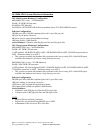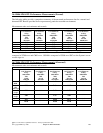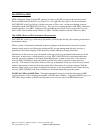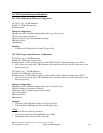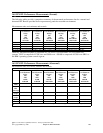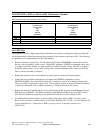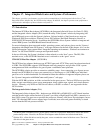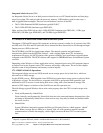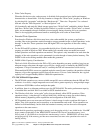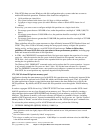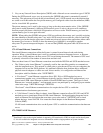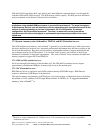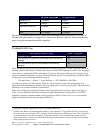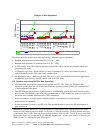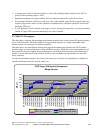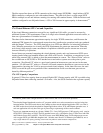
y Write Cache Property
When the disk device write cache property is disabled, disk operations have similar performance
characteristics to shared disks. You may examine or change the “Write Cache” property on Windows
by selecting disk “properties” and then the “Hardware tab”. Then view “Properties” for a selected
disk and view the “Disk Properties” or “Device Options” tab.
All dynamically and statically linked storage spaces have “Write Cache” enabled by default. Shared
links have “Write Cache” disabled by default. While it is possible to enable “Write Cache” on shared
disks, we recommend to keep it disabled to insure integrity during clustering fail-over operations.
There is also negligible performance benefit to enabling the write cache on shared disks.
y Extended Write Operations
Even though a Windows disk driver may have write cache enabled, the system or applications
consider some write operations sensitive enough to request extended writes or flush operations “write
through” to the disk. These operations incur the higher CPW cost regardless of the write caching
property.
y For the IXS and IXA solutions - do not enable the disk driver “Enable advanced performance”
property provided in Windows 2003. When enabled, all extended writes are turned into normal
cached operations and flush operations are masked. This option is only intended to be used when the
integrity of the write operations can be guaranteed via write through or battery backed memory. The
IXS/IXA with write caching enabled cannot make this guarantee.
y IXS/IXA Disk Capacity Considerations
The level of disk I/O achieved on the IXS or IXA varies depending on many variables, but given an
adequate storage subsystem, the upper cap on I/O for a single server is limited by the IXS/IXA IOP
component. Except in extreme test loads, it’s unlikely the IOP will saturate due to disk activity.
When multiple IXS/IXA servers are attached under the same System i partition, the partition software
imposes a cap on the aggregate total I/O from all the servers. It is not a strict limitation, but a typical
capacity level is approximately 6000 to 10000 disk operations/sec.
17.2.2 iSCSI Disk I/O Operations:
y The iSCSI disk operations use a more scalable storage I/O access architecture than the IXS and IXA
solutions. As a result, a single integrated server can scale to greater capacity by using multiple target
and initiator iSCSI HBAs to allow multiple data paths.
y In addition, there is no inherent partition cap to the iSCSI disk I/O. The entire performance capacity
of installed disks and disk IOAs is available to iSCSI attached servers.
• The Windows disk drive “write cache” policy does not directly affect iSCSI operations. Write
operations always “write through” to the host disk IOAs, which may or may not cache in battery
backed memory (depending on the capabilities and configuration of the disk IOA).
y iSCSI attached servers use non-reserved System i virtual storage in order to perform disk input or
output. Thus, disk operations use host memory as an intermediate read cache. Write operations are
flushed to disk immediately, but the disk data remains in memory and can be read on subsequent
operations to the same sectors.
While the disk operations page through a memory pool, the paging activity is not visible in the “Non-DB”
pages counters displayable via the WRKSYSSTS command. This doesn’t mean the memory is not
actively used, it’s just difficult to visualize how much memory is active. WRKSYSSTS will show faults
and paging activity if the memory pool becomes constrained, but some write operations also result in
faulting activity.
IBM i 6.1 Performance Capabilities Reference - January/April/October 2008
© Copyright IBM Corp. 2008 Chapter 17 - Integrated BladeCenter and System x Performance 282



